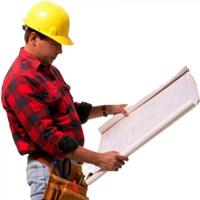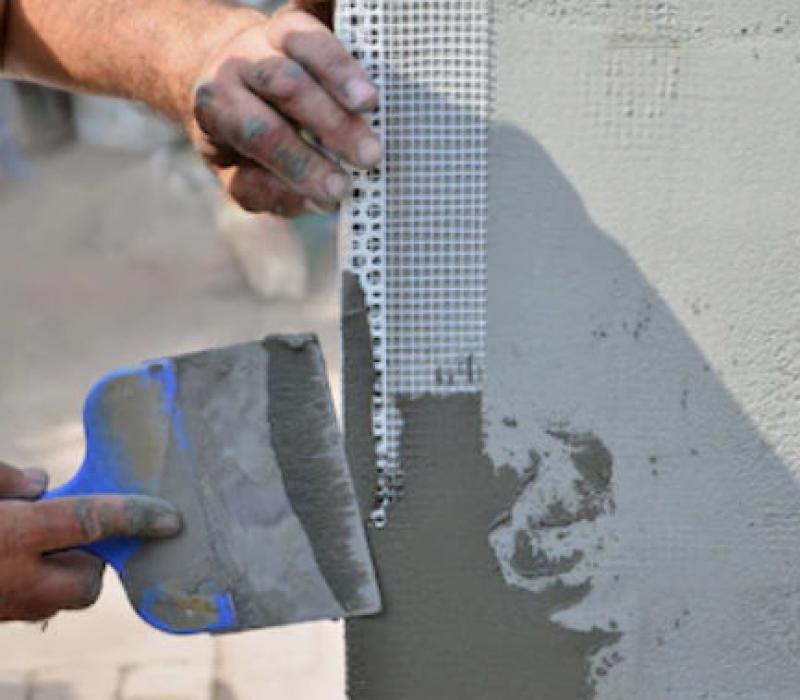How to Repair Stucco
by Guest Post on Apr 17, 2010
Stucco is composed of water, a binding material and construction aggregate which is mainly used as a strengthening material. It is a building material and it gives the walls, an attractive look. Moreover, it is durable and weather-proof. The use of stucco in the United States dates back to the nineteenth century. St John's Church, Washington D.C. is an example of one of the most important stucco structures of the nineteenth century. Stucco was considered to be a far more superior, inexpensive, dryer and a warmer material than the bricks by Andrew Jackson Downing, who was an architect of those times. Stucco is of two types, the traditional and the modern. The traditional stucco comprised water along with sand and lime whereas the modern one consists of sand, water, lime and Portland cement. The modern stucco is a cement plaster wall covering used for exterior walls of the building. It sometimes might also contain a mixture of additives that include synthetic acrylics and fibers. This mixture is added to increase the strength. Other than walls, stucco can also be applied to wood. From the above discussion, it is understood that stucco is a vital material to strengthen the wall and also for home decorating purposes. Stucco repair becomes necessary when it shows signs of damage. So let us find out how to repair stucco.
Steps to Repair Stucco
Stucco repair is not a difficult job, it only requires some practice to do it perfectly. To practice, you can try stucco repair on boards that contain holes in it. Once you heal those cracks successfully, you can move further to do the actual job.
Material Required
You will require Portland cement, bitumen, polyvinyl acetate (PVA) bonding agents, dampened rags, one soft-bristled brush, latex paint, some garden hoses and attachments, paint rollers, primer, hammer, cold chisel, caulking material, bucket, one fiberglass cloth and adequate quantity of builders sand.
Procedure for Stucco Repair
- The first step in repairing exterior stucco is to completely soak the crack area with the help of a hose. If done so, the stucco would not separate water from the new mortar and thus would prevent crumbling.
- The next step is to prepare the mortar by mixing some water to one part of the Portland cement and about four parts of the builders' sand. Ensure that the mortar has become thick enough to be used for the work.
- Further, take the polyvinyl acetate bonding agent and cover the cracked area.
- The bond would remain a little sticky for some time, therefore apply the mortar to the crack at this time itself. This would fix the bond and the mortar mix properly to the crack.
- Now, cover the cracked area with the help of bitumen-coated fiberglass.
- Further, the fiberglass needs to be fixed in its place. You can do this by pressing a paint roller over it.
- Apply bitumen to the crack area now and let it dry. On drying the first coat, apply the second coat and spread it uniformly with
- the help of a soft-bristled brush, so that the coat doesn't stand out as an odd spot on the wall
- You might be wondering how to paint a stucco? Well, it is not difficult. Use the primer to paint the patched area and let the primer dry. Apply another coat of primer and take care that the newly painted area should look a part of the rest of the wall.
Some Tips to Remember While Repairing Stucco
- If you ever find vertical cracks from the bottom of the wall to the window or the roof of the wall to the door, have these cracks repaired from a professional. As such, cracks indicate a fault in the foundation of the wall.
- Very tiny cracks that are less than 1/8 inch can be stuffed with superior quality caulk. Prefer using a caulk that allows painting on it post-application.
- For painting a stucco, always prefer an acrylic-based paint which prevents moisture from accumulating in the stucco paint.
So you have seen that stucco repair is not at all a difficult job. Stucco installation can be achieved with sufficient practice followed by proper implementation of the above procedure in getting that right finish for your walls.
Popular Articles
Three Places to Spend Money on the Exterior of Your Home
When you have the exterior of your home remodeled, you are investing, time, energy and convenience into the project and you want to make sure that...
98636 Views
Homemade Headboards-Make an Upholstered or Wooden Headboard
Homemade headboards can add a lot of personality to any bedroom. They can be coordinated with existing furniture and room decor or they can be the...
75150 Views
When to Use a Brush, Roller or Sponge Brush
Brushes are a good choice for painting trim and woodwork. They are also useful for cutting in the edges around the top and bottom edges and corners...
72244 Views
Creating a Cottage Kitchen with Bead Board
Kitchen decor can range from modern and bold to elegant and elaborate by using strategic kitchen pieces. One of the most popular decorating trends...
53567 Views
Gas Fireplace Diagnostics and Troubleshooting
Follow these steps for diagnosing and troubleshooting Gas Fireplaces repairs. For the average DIYer, this may seem intimidating, depending on the...
30986 Views
Latest Articles
How Much Does It Cost To Take A Bath?
Plumbers know that a bath may seem like a relaxing luxury, but the real cost extends far beyond your water bill. The average soak uses 35 to 50...
on Apr 8, 2025
10 Concrete Patio Ideas on a Budget
A concrete patio can be a game-changer for your outdoor space. It is durable, versatile, and can be customized to fit your style. But what if you...
on Mar 25, 2025
Tips for Creating a Stunning Personalized Photo on Canvas
Order the unique beauty of a personalized photo on canvas and bring your memories to life. With a customized photo on canvas, you can transform...
on Mar 7, 2025
Best Areas to Buy Property in Singapore for Long-Term Growth
Singapore's real estate market remains one of the most stable and lucrative in the world. With limited land supply, strong governmental...
on Feb 18, 2025
Troubleshooting Excess Water in Your HVAC Secondary Condensate Drain Pan
When maintaining your air conditioning system, it is easy to overlook the condensate drain pan - until excess water starts pooling in places where...
on Jan 12, 2025
Featured Articles
What Type of Licensed Contractor Should You Hire?
on Feb 28, 2017
Hire Contractors / Estimates

Looking for a specialty project? There are many types of contractors available for your home improvement needs. Finding the right type of...
Sponsored Articles
Best Areas to Buy Property in Singapore for Long-Term Growth
on Feb 18, 2025
Real Estate / Finance

Singapore's real estate market remains one of the most stable and lucrative in the world. With limited land supply, strong governmental...
Actions
Top Categories
- Garden / Landscaping / Patio — 264
- Kitchen / Bathrooms — 240
- Real Estate / Finance — 203
- Appliance / Repair — 186
- Interior Design / Decor — 184
- HVAC / Air Conditioning — 148
- Cleaning / Maintenance — 144
- Improvements / Remodeling — 131
- Plumbing / Basements — 118
- Floors / Tile / Hardwood — 116
- Doors / Garages — 113
- Safety / Security — 113
Articles Archive
More DIY Articles
How to Find Information on Buying an Electric Range
There is a certain amount of stress involved in purchasing a new appliance and an electric range is no exception. There is a great deal of variety...
Tips for Creating a Stunning Personalized Photo on Canvas
Order the unique beauty of a personalized photo on canvas and bring your memories to life. With a customized photo on canvas, you can transform...
Key Factors to Look for in Professional Furniture Removalists
Moving from one office to another or one home to another is inevitable in this day and age that we live in. There are various reasons why we move;...
Granite Worktops for the Kitchen – Price Factors
Granite is still extremely popular for kitchen worktops, primarily because of its exceedingly good looks and durability. But the price for a...
Home Improvement Precautions
Home Improvement Precautions: If you’re partaking in a little DIY or other work around your home, there are a huge number of things you should...

